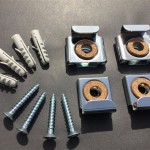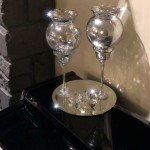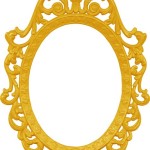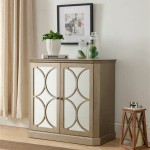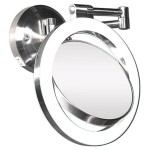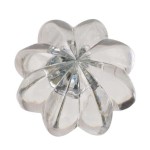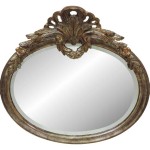How To Make A Mirror Frame From Molding
Creating a custom frame from molding adds a polished, personalized touch to any mirror. This project offers a relatively simple way to elevate a plain mirror, requiring basic tools and readily available materials. This article provides a step-by-step guide to crafting a beautiful and durable mirror frame.
1. Gathering Materials and Tools
Before starting, assemble all necessary materials and tools. This preparation ensures a smooth and efficient workflow. The molding itself should be chosen to complement the mirror and surrounding decor. Wood, composite, or even metal molding can be used, depending on the desired aesthetic.
Essential materials include the mirror, chosen molding, wood glue, finishing nails, measuring tape, and a miter saw or box. Optional materials include wood filler, sandpaper, paint or stain, and sealant.
Necessary tools include a safety square, pencil, hammer, and nail set. A miter saw ensures accurate angle cuts, while a power drill with a countersink bit can be used for pre-drilling nail holes, reducing the risk of splitting the molding.
2. Measuring and Cutting the Molding
Accurate measurement is crucial for a well-fitting frame. Measure the length and width of the mirror precisely. These measurements will determine the length of the molding pieces.
Transfer the measurements to the molding, marking the cut lines with a pencil. Because the frame pieces will be joined at 45-degree angles, it’s essential to use a miter saw or box to achieve precise cuts. For rectangular or square mirrors, four pieces of molding will be needed. For circular mirrors, flexible molding is recommended, and the process will involve creating a curved frame.
When cutting, ensure the molding is securely held against the fence of the miter saw to prevent movement and ensure clean, accurate cuts. Double-checking measurements before cutting is always a good practice.
3. Assembling the Frame
Once all the molding pieces are cut, dry-fit them around the mirror to ensure a proper fit. This step allows for adjustments before applying glue and securing the frame. Minor discrepancies can be addressed by sanding the edges of the molding.
Apply wood glue to the mitered ends of the molding pieces. Join the pieces together, forming a complete frame around the mirror. Use a damp cloth to wipe away any excess glue immediately.
4. Securing the Frame
To reinforce the glued joints and ensure a strong frame, use finishing nails. Pre-drilling pilot holes is recommended, especially for harder woods, to prevent splitting. Space the nails evenly along the length of the joined molding pieces. A nail set helps to drive the nails below the surface of the molding without marring the surface.
5. Finishing the Frame
Once the frame is assembled and secured, allow the glue to fully dry according to the manufacturer’s instructions. If using wood filler, apply it to the nail holes and any gaps between the joined molding pieces. Allow the filler to dry completely and then sand it smooth with fine-grit sandpaper.
The frame can then be painted, stained, or sealed depending on the desired finish. Multiple coats of paint or stain may be necessary for optimal coverage and durability. A sealant will protect the frame from moisture and wear.
6. Attaching the Frame to the Mirror
Several methods exist for attaching the framed mirror to the wall. Heavy-duty picture hangers or D-rings can be attached to the back of the frame. Alternatively, the frame can be directly mounted to the wall using appropriate fasteners. The chosen method will depend on the weight of the mirror and the wall material.
7. Considerations for Different Mirror Shapes
While the basic steps remain similar, framing a circular or irregularly shaped mirror presents unique challenges. Flexible molding is often the best choice for these shapes. Careful measurement and precise cutting are paramount to achieving a smooth, continuous curve. In some cases, specialized tools or techniques, such as steam bending wood, may be required.
For complex shapes, consider creating a template from cardboard or paper first. This allows for accurate transfer of the shape to the molding material, minimizing waste and ensuring a perfect fit.

Diy Bathroom Mirror Frame With Molding The Happier Homemaker

How To Frame A Mirror Sand And Sisal

How To Frame Out That Builder S Grade Mirror The Easy Way Pink Little Notebookpink Notebook

How To Make An Easy Diy Bathroom Mirror Frame Momhomeguide Com

Easy Diy Tutorial Adding Trim Around A Giant Mirror For Ers

How To Make A Simple Mirror Frame With Wood Upgrade An Old

Diy Bathroom Mirror Frame For Under 10 O Hayley Blog

How To Frame A Bathroom Mirror With No Miter Cuts Another Church Update The Stonybrook House

Mirror Frame Diy How To Update A Basic Bathroom Our Faux Farmhouse

How To Make A Diy Mirror Frame With Moulding Home Decor

